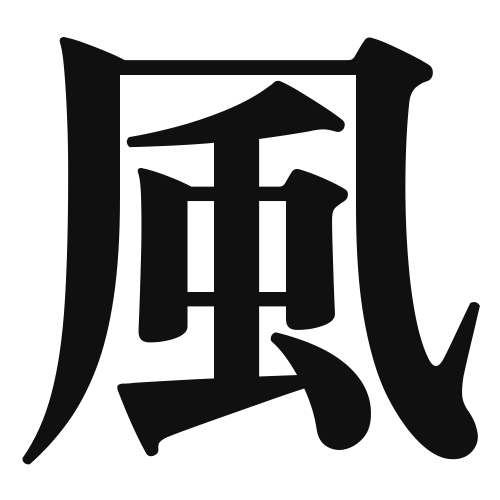1. Overview of Meaning
The kanji “風” (pronounced “kaze” in Japanese) means “wind.” It represents the natural phenomenon of moving air and is often associated with concepts like change, freedom, and nature.
2. Formation and Radicals
Formation of the Kanji: The kanji “風” is a pictogram, originally depicting the movement of air. It is classified as a phonetic-ideographic character, where the shape conveys the idea of wind.
Radical: The radical for “風” is “風” itself, which is used in various other kanji related to wind and air.
3. Examples of Usage
Common Words and Phrases:
- 風邪 (kaze) – cold (as in illness)
- 風力 (fūryoku) – wind power
- 風景 (fūkei) – scenery
Example Sentences in Daily Conversation:
- 今日は風が強いですね。 (Kyou wa kaze ga tsuyoi desu ne.) – The wind is strong today, isn’t it?
- 風邪をひかないように気をつけてください。 (Kaze o hikanai you ni ki o tsukete kudasai.) – Please be careful not to catch a cold.
4. Synonyms and Antonyms
Similar Kanji:
- 嵐 (arashi) – storm (a more intense form of wind)
- 風流 (fūryū) – elegance or style, often associated with the beauty of nature and wind.
Antonyms:
- 静 (shizu) – quiet or calm, representing the absence of wind.
5. Cultural and Historical Background
Connection to Japanese Culture: In Japanese culture, wind is often seen as a symbol of change and is frequently referenced in poetry and art. It is also associated with the changing seasons.
Proverbs and Idioms:
- 風の便り (kaze no tayori) – news carried by the wind, meaning information received from an indirect source.
- 風が吹けば桶屋が儲かる (kaze ga fukeba okeya ga moukaru) – When the wind blows, the bucket maker profits, illustrating how one event can lead to unexpected consequences.
